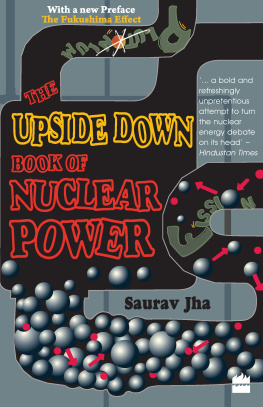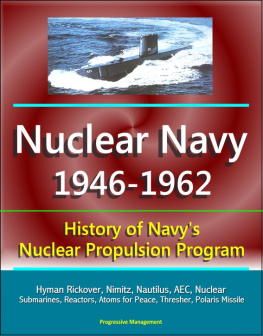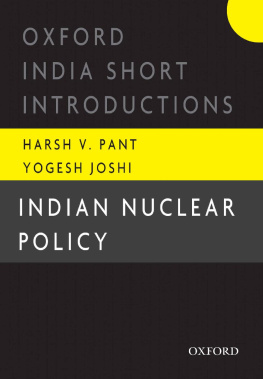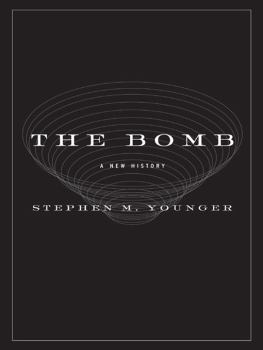Science, Politics, and Controversy
Other Titles in this Series
Technological Innovation: The Experimental R&D Incentives Program, edited by Donald E. Cunningham, John R. Craig, and Theodore W. Schlie
Federal Funding of Civilian Research and development, edited by Michael Michaelis
Ceramic Microstructures '76: With Emphasis on Energy Related Application: Proceedings of the Sixth International Materials Symposium, edited by Richard M. Fulrath and Joseph A. Pask
The State of Science and Research: Some New Indicators , edited by Nestor E. Terleckyj
Flavor: Its Chemical, Behavioral, and Commercial Aspects: Proceedings of the Arthur D. Little Flavor Symposium, April 1977, edited by Charles M. Apt
Technology Transfer to Cities: Processes of Choice at the Local Level , W. Henry Lambright
Valuing Life: Public Policy Dilemmas , edited by Steven E. Rhoads
Westview Special Studies in Science, Technology, and Public Policy
Science, Politics, and Controversy: Civilian Nuclear Power in the United States 1946-1974
Steven L. Del Sesto
This book traces the evolution of civilian nuclear power in the United States between 1946 and 1974, describing and analyzing the commercialization of nuclear energy and surveying pivotal events in the dissension that has recently accompanied its large-scale application. Professor Del Sesto views these events in terms of three themes: federal regulation of advanced technology, the gradual entrance of more diverse interest groups into the political arena, and the problems created by the conflicting claims of experts. He concludes that the lessons of the nuclear debate are most important for their implications for the expanding use of scientific and theoretical knowledge in democratic social orders. More broadly, he writes of the confrontation between knowledge and power that lies at the heart of the growing number of technological controversies that mark late twentieth century industrialized societies throughout the world.
Steven L. Del Sesto, currently assistant professor of science, technology, and society at Cornell University, has taught sociology at the University of Southwestern Louisiana, the Rhode Island School of Design, and the University of Rhode Island.
Science, Politics, and Controversy: Civilian Nuclear Power in the United States, 1946-1974
Steven L. Del Sesto
First published 1979 by Westview Press
Published 2019 by Routledge
52 Vanderbilt Avenue, New York, NY 10017
2 Park Square, Milton Park, Abingdon, Oxon OX14 4RN
Routledge is an imprint of the Taylor & Francis Group, an informa business
Copyright 1979 by Taylor & Francis
All rights reserved. No part of this book may be reprinted or reproduced or utilised in any form or by any electronic, mechanical, or other means, now known or hereafter invented, including photocopying and recording, or in any information storage or retrieval system, without permission in writing from the publishers.
Notice:
Product or corporate names may be trademarks or registered trademarks, and are used only for identification and explanation without intent to infringe.
Library of Congress Catalog Card Number: 79-5227
ISBN 13: 978-0-367-28672-9(hbk)
To Angelo Del Sesto
As of June 1977, the United States had some 232 nuclear power plants either planned or in operation, with a generating capacity estimated at about 321 million kilowatts. To date, the industrial world has spent over $200 billion in order to produce useful energy from nuclear fission. By all odds, civilian nuclear power is one of the largest technological ventures in history. To many, this massive effort is completely justified: No other single technology offers as much promise for satisfying world energy needs in the years ahead--particularly as fossil fuels dwindle and climb drastically in price. Yet to others, there is no single technology which raises such serious questions of risk to public health and safety.
Given the world energy situation, it is unlikely that nuclear power development can or will be halted in the near future. Many countries, without the resources of the United States, simply have few adequate alternatives to nuclear power generation, and they will likely push ahead with the nuclear option irrespective of what the United States does. Barring significant technological breakthroughs, there appears little choice but to deal with nuclear power as a fact of life in the remainder of this century. The task, therefore, is not simply deciding how to abolish nuclear power, but rather, deciding how to manage its use in the best interests of humanity. Hopefully, by tracing the story of nuclear power development and its accompanying controversy in the United States, this book will contribute to the realization of that task.
A word also should be mentioned about the time period covered in this study. The 1974 date was selected as a cut-off point for two reasons. The principle reason was that in 1974 the passage of the Energy Reorganization Act--which abolished the Atomic Energy Commission and created the Nuclear Regulatory Commission and the Energy Research and Development Administration--signaled a basic shift in government policy toward nuclear energy regulation and control. While many skeptics believe nothing really changed except the names and the number of agencies involved, the break-up of the AEC's monopoly nevertheless indicated a more pluralistic assessment of nuclear energy development was in the offing. So in a sense, a new "era" of nuclear policy actually began in 1974.
Second, and perhaps more realistically, is that significant spade work with primary source material--such as the work assembled in the "official" nuclear energy histories prepared under the direction of the Department of Energy's chief historian, Richard G. Hewlett--still needs to be done for the post-1974 period. This would be a major study in itself and is clearly beyond the scope of the present work. Thus, much of the story of nuclear energy development in America remains to be written, since the post-1974 period will undoubtedly prove crucial to this story.
Naturally, I have accumulated many debts in the course of writing this book, since no book is an individual effort but a cooperative enterprise. Many people have contributed to the project in one form or another at several points along the way, and though doubtless insufficient considering the value of their contributions, I would like to take this opportunity to acknowledge their help and advice.
Much of the material herein was drawn directly from my doctoral dissertation completed between 1976 and 1978 at Brown University. In the initial stages of the study, I profited a great deal from the many discussions and contributions of my Brown colleagues. Particularly useful and valuable was the insight and advice of A. Hunter Dupree, whose vast knowledge of science policy in the federal government lent great utility in establishing an adequate historical framework in which to view the development of nuclear energy. Dietrich Ruesche-meyer also deserves special acknowledgement for his penetrating criticisms of earlier drafts of the manuscript and for his insistence on analytical and organizational clarity. Martin U. Martel and J. Allen Whitt, through careful critical reading various chapters, also provided valuable assistance and advice which influenced the shape and direction of the book, and I am indebted to them for their important contributions. Other Brown colleagues provided various forms of support and encouragement and I would especially like to thank Basil G. Zimrner, Frances Kobrin, and Barbara Anderson. Mark Shields also deserves special thanks for arranging convenient access to the nuclear energy library at Oak Ridge National Laboratory, a resource of obvious value to this work. Finally, without the generous financial support of Brown University during the years 1974-1977, this book would not have been possible.










